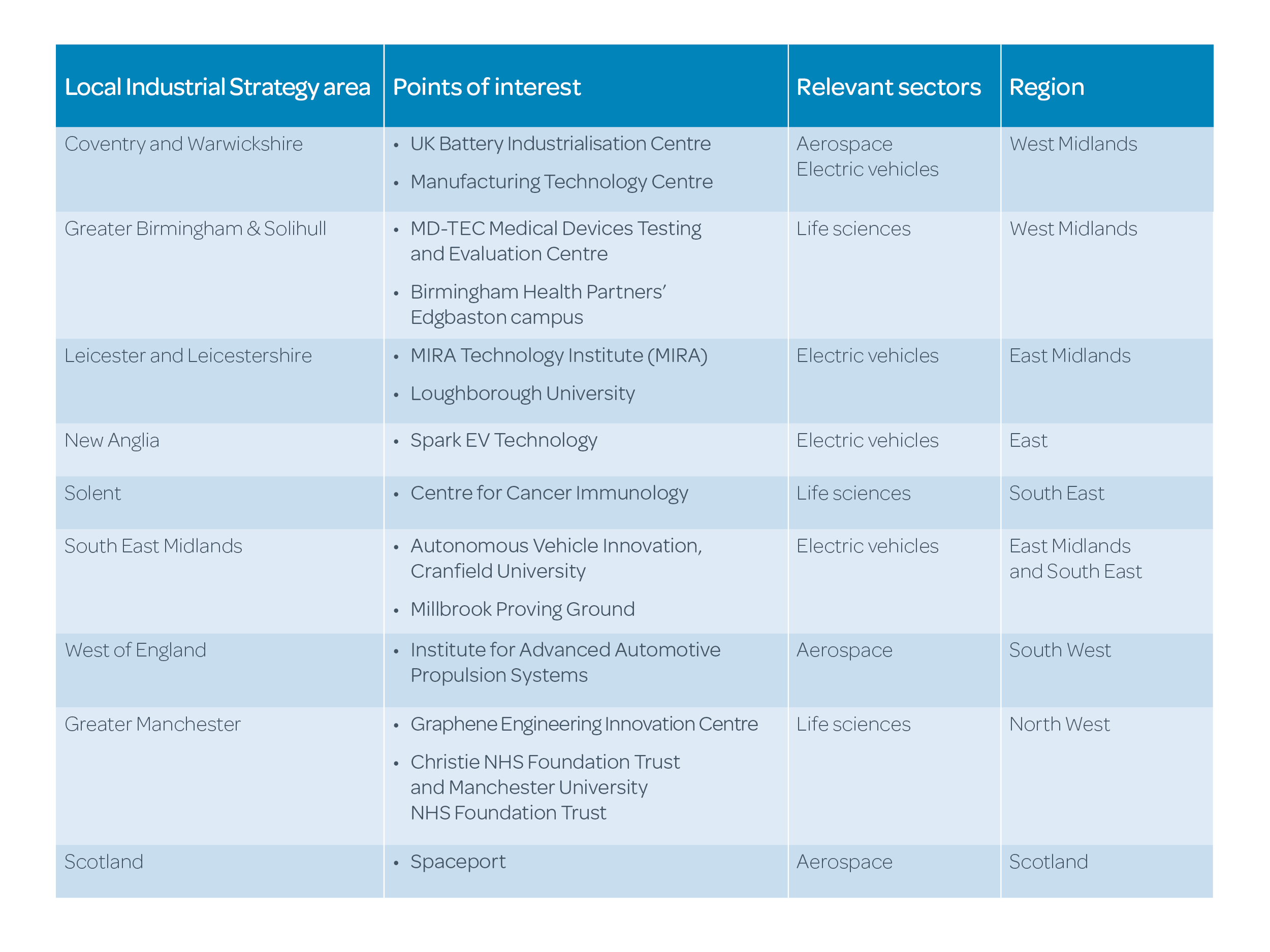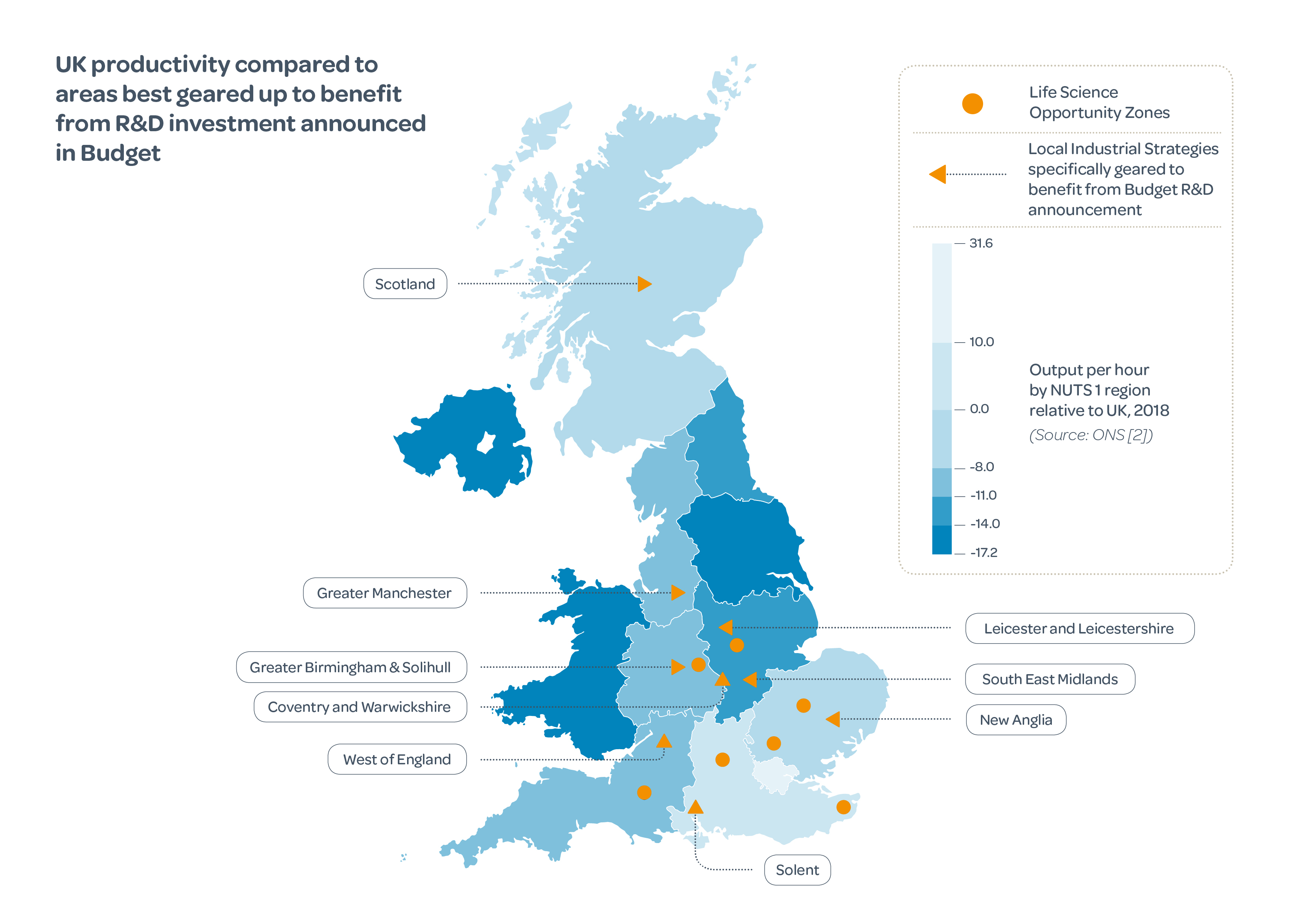Comment
Can a step change in R&D help level-up productivity?
In his Spring Budget earlier this month, Rishi Sunak announced a series of financial packages aimed at supporting the UK’s research and development (R&D) sector, with research institutions, universities but also private sector being of particular focus for this ‘step change’. ‘The UK’s success in the global economy will be rooted in innovation and cutting-edge technology’ [1].
What are the funding measures?
The Government set out plans to increase ‘public R&D investment to £22 billion per year by 2024-25’ [1], making direct support equal to 0.8% of Gross Domestic Product. Clearly the objective is to obtain competitive ground on other nations, with this investment being a greater percent of GDP than seen in the USA, Japan, France and China.
Some of the highlights include:
- £400m to universities and research institutes for world-leading research in 2020-21.
- £300m towards experimental mathematical research and doubling PhD funding.
- £800m in a new blue-skies funding agency to support high-risk, high-reward science.
- £80m to the UK’s foremost specialist institutions over the next five years.
- A Life Sciences Investment Programme to support the UK’s most innovative health and life sciences business over the next five years.
- £900m towards commercialising nuclear fusion technology, supporting the National Space Strategy, large-scale production of electric vehicles and life sciences.
These measures provide a further piece of the puzzle in delivering aspirations set out in the UK’s Industrial Strategy (2017) with regards to the four ‘grand challenges’ (artificial intelligence and data; ageing society; clean growth; and, future of mobility) as well as a potential stepping stone to reducing the productivity gap, both nationally and across the country.
What can we expect in terms of addressing the productivity gap?
The Government has indicated that it will examine how R&D funding can best be distributed across the country to help ‘level up every region and nation of the country’. We will have to wait until the Comprehensive Spending Review for more on this, though the Government is keen to point out that ‘public bodies are spread across the country and this support will help level-up regional innovation capability and networks outside of the South East’.
However, a number of research institutions or locations specifically named in the Budget are in the South East (London School of Hygiene and Tropical Medicine, the Royal College of Art, and Institute of Cancer Research).
Areas geared to benefit
How well the measures introduced in the Budget deliver against the priority to narrow the productivity gap will be dependent on a number of factors including the geography of investment and its take up by relevant institutions; and alignment with Local Industrial Strategies and other R&D policies.
Locations which already have strategies in place to support relevant R&D are likely to be particularly geared to benefit. This includes, but is not limited to:
- Local Industrial Strategies (LIS): Ambitions of all 38 Local Enterprise Areas (LEPs) as well as Wales, Scotland and Northern Ireland include aspects of R&D in relation to one or more of the Government’s grand challenges. Many of these ambitions are aligned with a university or research centre presence. The degree to which they are geared up to deliver significant R&D and take advantage of the Budget investment will be influenced by the presence of these institutions and their alignment to the Government’s Budget investment priorities in nuclear fusion, space, electric vehicles and life sciences.
- Twenty-five LIS’s include a focus on at least one of these sectors.
- The following are examples (not an exclusive list) of LIS areas which may be geared to particularly benefit from the spending announcements and help to level-up productivity. This is based on desk based analysis we have carried out in-house and serves to identify those LIS’s with a particular strategic strength and focus on one of the key sectors:

- Life Science Opportunity Zones (LSOZ): in February 2020, 6 areas were awarded LSOZ status in addition to the existing Zone at Charnwood Campus, Loughborough. No such zones exist north of the East and West Midlands.
- Oxford Cambridge Corridor: this geography benefits from historic investment and academic presence in R&D. The four Local Industrial Strategies covering the corridor were published in unison, showing a joined up approach, and reflect continued activity in life sciences in particular.
The following map shows productivity by region (output per hour by region, 2018), together with the location of LSOZ’s and notable LIS strategies (listed above) aligned with Government investment priorities in nuclear fusion, space, electric vehicles and life sciences. The most productive regions are London and the South East, with the least productive including Yorkshire and Humber and Wales.

Step change and levelling-up
There is a concentration of relevant strategies and activities in the central and southern core of England (see map above and noting this is not an exclusive list). Of these, the areas which have a lower level of output per hour compared to the UK and therefore may particularly benefit from the spending outlined in the Budget are:
- East Midlands
- West Midlands
- South West
- North West
- East
However, there is a gap in LSOZ’s, and potentially appropriately aligned LIS’s, in the north of the country and outside of England. The productivity output per hour of these areas is lower than that of the UK average. They may therefore be at a greater disadvantage.
This suggests that while the Budget may make some headway to narrow the productivity gap, it may not go far enough to support R&D as a mechanism to redress the productivity gap across the whole country. Instead, based on our headline analysis of those areas best geared to benefit from the Budget’s R&D spend, it suggests a slow creep northwards from London and the South East.
How effectively this Budget response can deliver against national productivity objectives will in part depend on this geographical distribution but also on how expediently institutions can access the funding and then put it to good use. We await the Comprehensive Spending Review to gain a fuller picture of how this might be achieved across the country.
24 March 2020
[1] Policy paper, Budget 2020 (Updated 12 March 2020)
[2] Regional labour productivity, including industry by region, UK: 2018